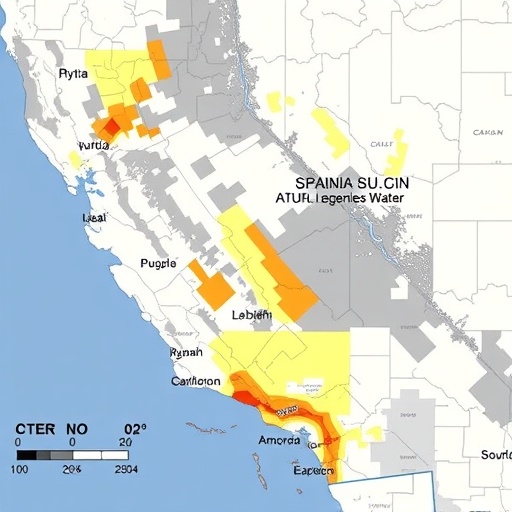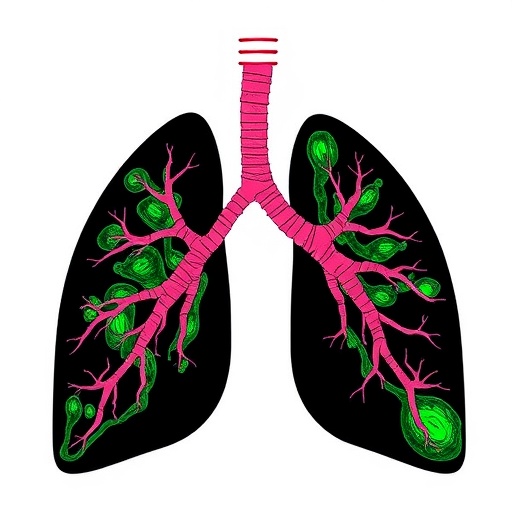It may be possible to change the purchasing behavior of consumers noticeably using some simple strategies. At least this is what a study, carried out by the University of Bonn and the Technical University of Munich, indicates. The researchers investigated the effect of nudging on the sale of products produced with high animal welfare standards in a virtual supermarket. Nudges are gentle prods or pushes designed to promote certain behaviors – such as placing some products in more visible positions. In the experiment, the participants in the nudging group selected products produced with high animal welfare standards about twice as frequently as the control group. The extent to which these results can be transferred to real purchasing decisions is still unclear. The study has now been published in the journal Appetite.
Nudging describes the act of pushing or prodding someone in a certain direction. In the field of economics, it is used to describe measures that can influence human behavior in a gentle way without banning things or offering monetary incentives. “We tested this strategy in a virtual supermarket,” explains Dr. Nina Weingarten from the Institute for Food and Resource Economics at the University of Bonn. “We wanted to find out whether it could motivate consumers to pay more attention to animal welfare aspects when making purchases.”
Food produced according to high animal welfare standards has only been moderately successful up to now in Germany. It is unlikely that this is due to a lack of information because various organic labels are now available and a four-stage animal husbandry labeling system has been used over the last few years to label the packaging on many meat products in red, blue, orange or green. Nevertheless, animal welfare products are still considered niche items in many supermarket ranges. As a result, only 13 percent of the meat products offered in supermarkets are produced according to husbandry standards that exceed the minimum legal guidelines.
Footsteps on the floor as guides
“Therefore, we wanted to test whether it was possible to improve sales of animal welfare products by increasing their availability and visibility,” says Weingarten. The researchers used two digital supermarkets in the form of 3D simulations with graphics based on modern video games for this purpose. The customers saw the shelves from a first-person perspective and were able to pick up and examine the products from all sides, place them in their shopping cart and finally purchase them at the end. “However, the purchasing decision was only hypothetical,” explains Prof. Monika Hartmann, Head of the Department of Agricultural and Food Market Research at the University of Bonn. “The participants were not expected to actually pay for their shopping and no real products were delivered to them afterwards.”
The researchers divided the test subjects into two groups. One group were asked to go shopping in a conventional supermarket, while the other group visited a supermarket containing various nudging elements. For example, markings on the floor shaped like footprints guided customers to a special “animal welfare shelf.” “Consumers in this group were able to find meat, milk and eggs produced with high animal welfare standards in one central location on an additional shelf,” says Weingarten. Large banners placed in various different locations also made the customers aware of this additional shelf. The implementations were a huge success: The nudging group selected animal welfare products almost twice as frequently as the control group on average.
Further studies needed
The extent to which the results can be transferred to the purchase of real food is still unclear. “Many people are extremely price sensitive and animal welfare products are generally significantly more expensive,” explains the psychologist. “In our experiment, however, we suspect that this only played a minor role because the purchases were only virtual.” Nevertheless, the data from the study did show that price-sensitive customers also selected the more expensive animal welfare products less frequently from the digital counters in the supermarket than customers who are less price sensitive. They thus behaved in a similar way to what we would also expect in reality.
Another aspect was also interesting in this context: These price-sensitive test subjects were also influenced by the nudging measures and purchased more food produced according to high animal welfare standards. It thus appears that these gentle nudges also had an effect on these people. “However, we need to carry out more studies to see how reliable these effects actually are,” says Prof. Hartmann. In addition, there has been little research up to now into whether nudging has a long-term effect or whether the effect of these measures wears off quickly. “This is another question that we are not yet able to answer.”
Participating institutes and funding
The University of Bonn and the Technical University of Munich participated in the study. The project was funded by the Federal Ministry of Food and Agriculture (BMEL).

Credit: Image: ILR/Uni Bonn
It may be possible to change the purchasing behavior of consumers noticeably using some simple strategies. At least this is what a study, carried out by the University of Bonn and the Technical University of Munich, indicates. The researchers investigated the effect of nudging on the sale of products produced with high animal welfare standards in a virtual supermarket. Nudges are gentle prods or pushes designed to promote certain behaviors – such as placing some products in more visible positions. In the experiment, the participants in the nudging group selected products produced with high animal welfare standards about twice as frequently as the control group. The extent to which these results can be transferred to real purchasing decisions is still unclear. The study has now been published in the journal Appetite.
Nudging describes the act of pushing or prodding someone in a certain direction. In the field of economics, it is used to describe measures that can influence human behavior in a gentle way without banning things or offering monetary incentives. “We tested this strategy in a virtual supermarket,” explains Dr. Nina Weingarten from the Institute for Food and Resource Economics at the University of Bonn. “We wanted to find out whether it could motivate consumers to pay more attention to animal welfare aspects when making purchases.”
Food produced according to high animal welfare standards has only been moderately successful up to now in Germany. It is unlikely that this is due to a lack of information because various organic labels are now available and a four-stage animal husbandry labeling system has been used over the last few years to label the packaging on many meat products in red, blue, orange or green. Nevertheless, animal welfare products are still considered niche items in many supermarket ranges. As a result, only 13 percent of the meat products offered in supermarkets are produced according to husbandry standards that exceed the minimum legal guidelines.
Footsteps on the floor as guides
“Therefore, we wanted to test whether it was possible to improve sales of animal welfare products by increasing their availability and visibility,” says Weingarten. The researchers used two digital supermarkets in the form of 3D simulations with graphics based on modern video games for this purpose. The customers saw the shelves from a first-person perspective and were able to pick up and examine the products from all sides, place them in their shopping cart and finally purchase them at the end. “However, the purchasing decision was only hypothetical,” explains Prof. Monika Hartmann, Head of the Department of Agricultural and Food Market Research at the University of Bonn. “The participants were not expected to actually pay for their shopping and no real products were delivered to them afterwards.”
The researchers divided the test subjects into two groups. One group were asked to go shopping in a conventional supermarket, while the other group visited a supermarket containing various nudging elements. For example, markings on the floor shaped like footprints guided customers to a special “animal welfare shelf.” “Consumers in this group were able to find meat, milk and eggs produced with high animal welfare standards in one central location on an additional shelf,” says Weingarten. Large banners placed in various different locations also made the customers aware of this additional shelf. The implementations were a huge success: The nudging group selected animal welfare products almost twice as frequently as the control group on average.
Further studies needed
The extent to which the results can be transferred to the purchase of real food is still unclear. “Many people are extremely price sensitive and animal welfare products are generally significantly more expensive,” explains the psychologist. “In our experiment, however, we suspect that this only played a minor role because the purchases were only virtual.” Nevertheless, the data from the study did show that price-sensitive customers also selected the more expensive animal welfare products less frequently from the digital counters in the supermarket than customers who are less price sensitive. They thus behaved in a similar way to what we would also expect in reality.
Another aspect was also interesting in this context: These price-sensitive test subjects were also influenced by the nudging measures and purchased more food produced according to high animal welfare standards. It thus appears that these gentle nudges also had an effect on these people. “However, we need to carry out more studies to see how reliable these effects actually are,” says Prof. Hartmann. In addition, there has been little research up to now into whether nudging has a long-term effect or whether the effect of these measures wears off quickly. “This is another question that we are not yet able to answer.”
Participating institutes and funding
The University of Bonn and the Technical University of Munich participated in the study. The project was funded by the Federal Ministry of Food and Agriculture (BMEL).
Journal
Appetite
DOI
10.1016/j.appet.2024.107316
Article Title
Every step you take: Nudging animal welfare product purchases in a virtual supermarket
Article Publication Date
27-Mar-2024




